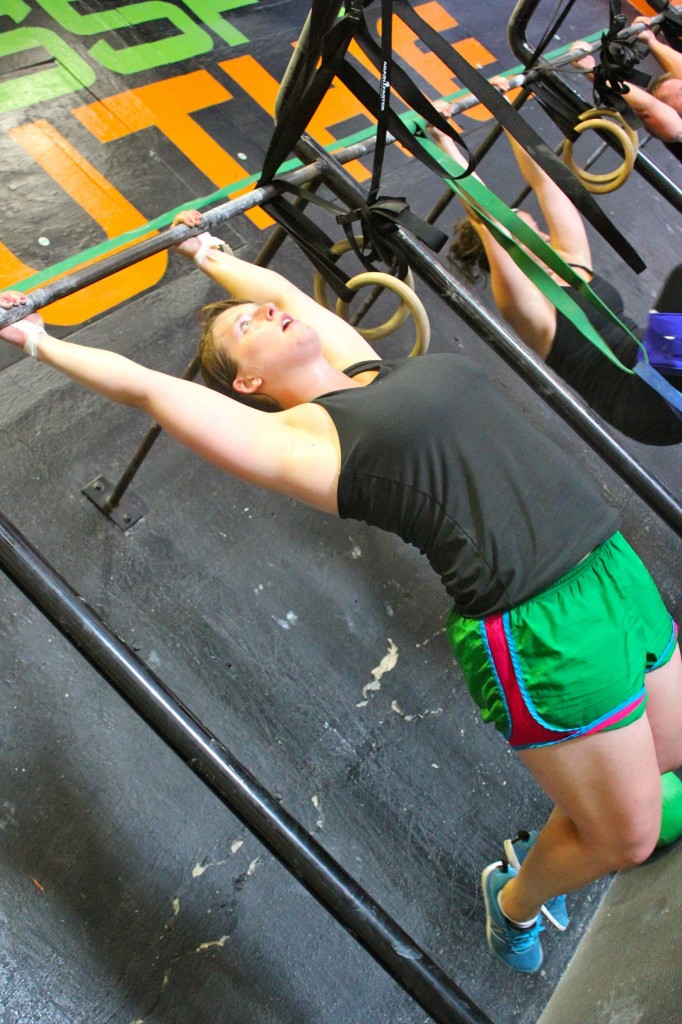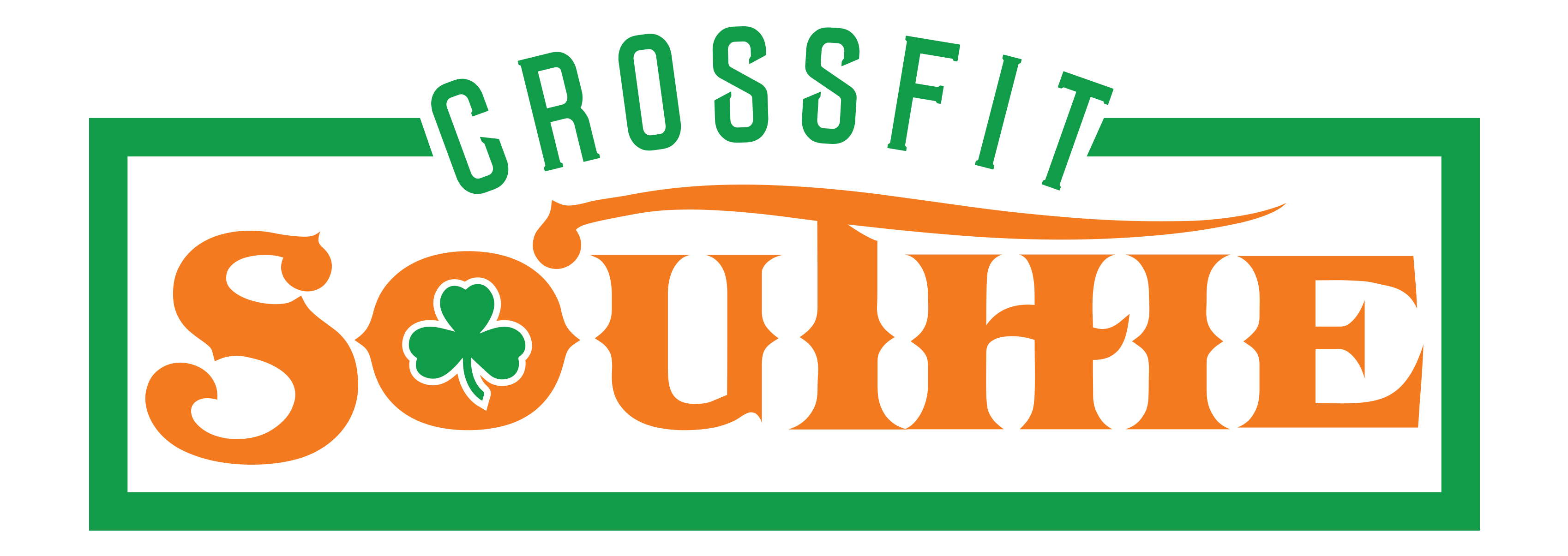 *Mobility is cancelled tonight and there will be no open gym from 1-4pm today*
*Mobility is cancelled tonight and there will be no open gym from 1-4pm today*
The pullup is one of the most essential movements of CrossFit. It involves strength, endurance, and coordination throughout the entire body and can be paired with almost any movement or set of movements and make a great workout.
Pullups can also be pretty intimidating, especially for newbies. We all remember that phys ed coach yelling at us back in middle school because we couldn’t get our chin over the bar. No worries, there won’t be any of that here. We want to help you conquer that lifelong fear of that pullup bar and get you cranking them out with the best of them. For many people getting a pullup is their #1 CrossFit goal, then getting the more advanced chest to bar and butterfly pullup down the road. Here are a number of ways to get better at pullups for people of all experience levels.
THE KIP
If you are new you have probably noticed people flying around on the pullup bars during workouts looking like they are doing some crazy dance move that somehow helps them do tons of pullups. This is called the kip. The kip makes for a more efficient movement as it involves momentum and using the entire body to send the body over the bar instead of just the arms and back. It allows us to do more pullups and do them faster.
The essentials of the kip are:
1) The swing
2) Turning over of the hips
3) Pushing away from the bar at the top/restarting the swing
To start to learn the kip you have to start with learning the swing and initiating from the shoulders, pushing the head and chest through the arms then pulling back with the back of your body. It may seem like the legs and feet are doing all the action here but it is actually the upper part of your torso, mostly the shoulders.
The turnover of the hips is what generates the power to propel you up to the bar as the arms pull. Think of it like you are jumping up to the bar, closing the hips then throwing them back open while you pull with the arms.
Perhaps the most important part of the kip is at the top. Many people have a problem with restarting the next pullup because they just drop straight down from the bar and lose their momentum. Momentum is key, so literally pushing away from the bar to restart that swing you started at the beginning is essential.
Improving the mechanics of the kip is the #1 way to get better at pullups. Being more efficient in the movement will allow you to do more pullups longer regardless of your strength level.
GETTING STRONGER
The kip is an amazing tool to help perform workouts with a lot of pullups. Since it is a total body movement, however, it doesnt build pure pullup strength as well as strict or “dead hang” pullups do. So if you struggle with pullups because of strength (which many people do especially starting out), or if you want to keep taking away bands and work towards one day doing unassisted pullups, then doing some sets of strict pullups a few times per week will help build the pulling strength needed to improve your pullups. Think around 3 sets of as many strict pullups you can do in a row with 2 minutes of rest between sets. If you use bands usually you should use bands plus maybe another red or blue so you can do at least 5+ each set.
Doing this extra work 2-3 times per week (aside from usual pullup workouts using the kip) will get you stripping away bands and moving towards unassisted pullups in no time. The goal should be to get 8-10 each of the 3 sets then work with less bands. Keep doing so until you are doing pullups without a band. It will happen faster than you think.
If you are close to doing a lesser scale or even unassisted pullups, pick and chose workouts to go for the harder scale of pullups. If it is something with a small number of reps and/or is an AMRAP, then it is a good idea to try the harder scale and give yourself the extra work. Small amounts of reps, around 5 or so, per round are manageable to do in small chunks without worrying about losing the intensity of the workout. AMRAPs are always good times to try harder movements you have been working on because regardless how much you struggle it has a specific end time. You can also ask a coach how to scale the number of reps in a certain workout if you are trying to make that breakthrough to less bands or no bands but know you are still not quite there to get all the reps required in a high rep workout.
ADVANCED PULLUPS: CHEST TO BAR, BUTTERFLY
Chest to bar pullups are a regular pullup with more of a pull. The chest, specifically the clavicle line or lower, must physically touch the bar to perform the movement as prescribed. It is similar to the regular kip just with a harder turnover of the hips and a stronger pull.
I say this in every class with CTB pullups: the only way to get better at CTB pullups is to do CTB pullups. They are harder and burnout faster than regular pullups. But the only way to get the strength for that extra pull is to do the full movement. I know it is tempting to switch to regular pullups mid workout because you are just dying trying to get your chest up there. However, as coaches we would rather see you stick with doing the chest to bar pullups and scale the reps per round than scale the movement itself. Ask one of us what a good amount of reps is for a certain workout if you know doing the written number of chest to bar isn’t manageable for you.
Ever seen Goose man doing those majestic, effortless looking circles on the bar and wonder what the hell he is doing, and say so even louder when you realize he’s done 50 in a row without coming off the bar? The butterfly kip technique is a more advanced kip that many advanced athletes use. It is a faster and more efficient way to kip your pullups.
The essentials of the butterfly pullup are:
1) the swing
2) small circles with the shoulders/reverse bicycle kick with feet
3) leaning back/kicking the feet/finishing the pull
The mental picture of the butterfly that I use when performing them is thinking of leaning back, kicking my shoes off, and making a sideways oval with my body. Essentially the chin goes over the bar farther back with the body staying behind the bar through the entire movement.
Any athlete should first work on mastering the regular kip before they attempt to learn how to butterfly. Then starting with the small circles with the shoulders and work on the timing of kicking with the feet is how to get going. Pretty soon you will find yourself flying your chin up and over the bar without even knowing it. Like anything, ask the coaches how to work on the butterfly and a manageable way to go about it. There is a lot of stress on the shoulders if the movement is done wrong so you want to be careful when practicing.
Skill
Double Unders
Pull-ups
WOD
4 Rounds
10 Deadlifts (225,155)
20 Pull-ups
50 Double Unders
Level 2 (185, 105), 15 pull-ups, 25 du
Level 1 (135, 75),10 pull-ups, 10 attempts
